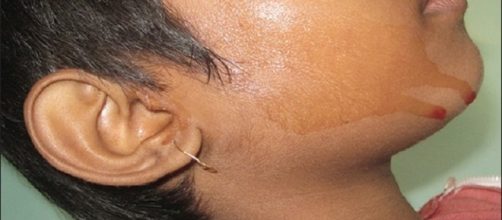A 21-year-old woman in Italy left doctors perplexed upon arriving at a medical ward sweating blood, with no visible skin lesions or gashes. In a report published on the Canadian Medical Association Journal website, the doctors observed "the discharge of blood-stained fluid from her face," believed to be a case of hematohidrosis, a very rare condition in which a human sweats blood.
What is hematohidrosis?
A person diagnosed with hematohidrosis experiences red-tinted sweat, which usually oozes from the forehead, nails, and other skin surfaces. The episodes don't normally last long, but in the unnamed woman's case, it would usually last about one to five minutes.
According to the report, the bleeding tended to be more intense when the woman experienced emotional stress.
History of hematidrosis
For years, health experts have been baffled by hematidrosis, with some questioning if the condition itself is real. Not much is known what really causes the bleeding, but it's thought to be a result of extreme fear or stress.
However, there have been cases of hematidrosis recorded throughout history. Leonardo Da Vinci once wrote about soldiers sweating blood before the battle, and for Christians, they believe Jesus sweat blood in the Garden of Gethsemane before he was crucified.
There is no single explanation for the source of bleeding in hematohidrosis. Despite the fluid’s sweat-like appearance, the hypothesis that blood passes through eccrine ducts, induced by abnormal constrictions and expansions of periglandular vessels, has not yet been proven.
Sweating blood in the modern times
A quick Google search on instances of hematidrosis doesn’t show much, making the Italian patient the most recent case in years. The report said that the woman has had the condition for three years now and has caused a dent in her social life. Life with hematidrosis caused the patient to develop panic disorder and symptoms of depression.
An analysis of the test conducted by Florentine doctors revealed that it was indeed blood oozing from the woman's skin and not colored sweat. As a treatment, the patient was given medication for high blood pressure, a beta blocker (and proposed moral enhancer) called propranolol, since others had treated patients similarly in the past that resulted in a reduction in bleeding.
The latest report indicated that the bleeding episodes had not completely stopped, although it has minimized. Proper medication and treatment had also been administered for her depression symptoms.


